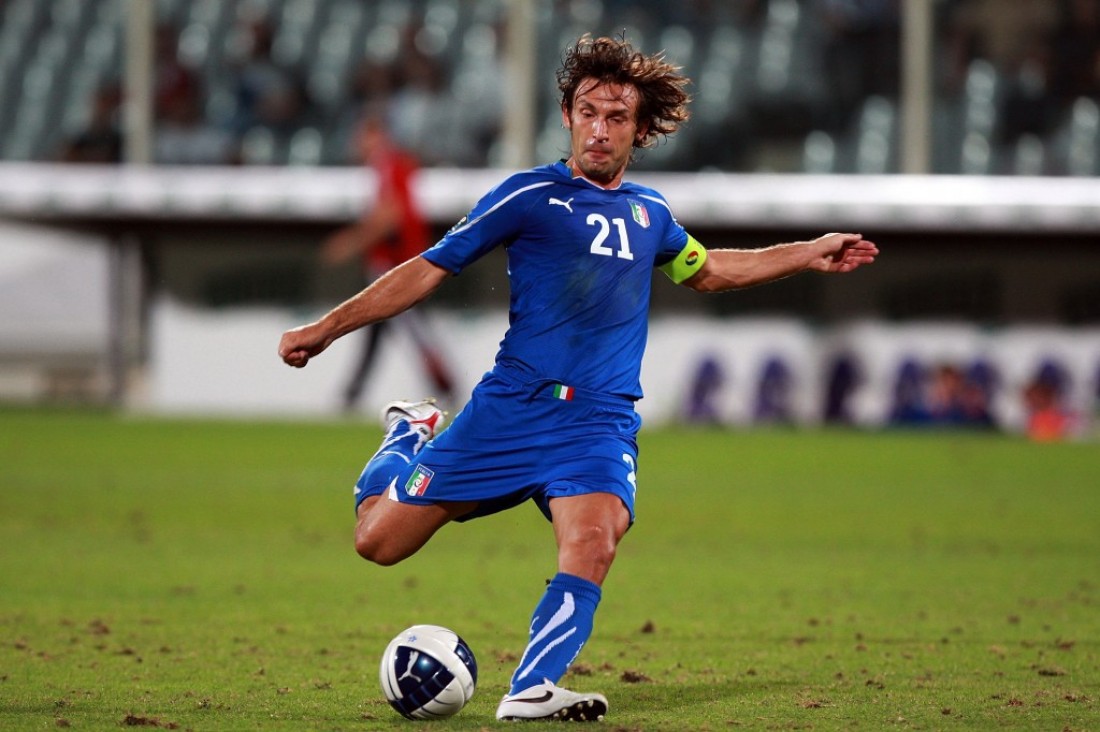In soccer, the technique of striking a ball with the instep of the foot has always seemed to be more of an art form than an exact science. Players who have mastered this technique (a few modern examples include David Beckham, Andrea Pirlo, and Zlatan Ibrahimovic) have no doubt spent thousands of hours practicing it, and as a result have developed their own slightly unique ball striking style. While this style may differ from player-to-player, a few biomechanical constants in the technique remain the same. Because a the cross-bar on a regulation size soccer goal is only 2.44 metres high, keeping the ball low when striking it is a critical component to the technique. Expert ball strikers – even if they strike the ball with a slightly differing technique – can strike with power and accuracy, while at the same time keeping the ball low enough to stay under the 2.44 metre cross-bar height.
Like many other soccer players who grew up in Canada, I was first introduced to ball striking technique from house league and rep coaches at a very early age. And, like many other Canadian players, I was taught from my coaches that in order to keep the ball low when striking it, I had to “keep my body over the ball.” On the surface, this coaching advice seems to make sense – after all, most of the time, especially with young players, if they keep their body over the ball while striking it, the ball is likely to stay lower than if they lean back while striking it. It is also part of our natural instincts as humans and as athletes to assume that the way we were taught to execute a technique (in this case, ball striking with the instep of the foot) is the correct way, especially if we are able to achieve the desired result through this execution (in this case, keeping the ball low when striking it).
A closer look into the biomechanics of ball striking, however, reveals that keeping the body over the ball has no relevance whatsoever to the height at which the ball will travel when it is struck. This is because the height that a ball reaches during an instep strike is related only to the point on the ball at which the foot makes contact with the ball when it is struck. If the ball is struck on the top half (slightly above the midline of the ball) it will stay low, regardless of the body position while striking. Similarly, if the ball is struck on the bottom half (below the midline of the ball) it will travel upwards, also regardless of the body position while striking. Thus, a coach who wishes to teach a player how to keep the ball low when striking with the instep of the foot needs only to focus on ensuring the player makes contact with the top half of the ball. There is no more need to tell a player to “keep your body over the ball.”
The elimination of the “body over the ball” kicking technique has other advantages as well. In a comprehensive review of instep kicking mechanics, Ismail et. al. (2010) determined that power in the instep strike is maximized in part through maximizing the range of motion at the hip of the kicking leg. This is because a greater range of motion at the hip allows the thigh and shin to travel – or accelerate – over a greater distance, and as a result of this greater acceleration, the power generated in the leg when contacting the ball will increase. Thus, a body position that is open, with an upright or slightly extended torso when contacting the ball, will allow for maximal range of motion at the hip joint of the kicking leg. Conversely, bending forwards or hunching over to keep the upper body “over the ball” has the exact opposite effect – that is, it restricts the range of motion at the hip of the kicking leg.
As mentioned previously, striking the ball with the instep of the foot is still very much an art form, so individual differences in ball striking technique may still exist between different players. Coaches who wish to teach players how to maximize power while at the same time keeping the ball low when striking with the instep, however, should avoid instructing players to “keep their body over the ball.” Instead, coaches should follow basic biomechanics principles, and instruct players to keep an upright, “open” body position, and make contact with the top half of the ball, in order to maximize power and keep the ball low when striking.
I’d love to hear your thoughts about this topic. Drop me a line here to get the conversation started.


Leave A Comment